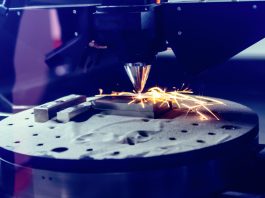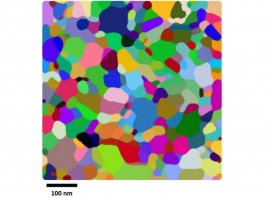Observing neutrinos is an extreme challenge for researchers as the particles do not leave direct traces in any detector and interact extremely rarely. How do we squeeze as much information as possible out of these invisible messengers?
When he first proposed the neutrino as a solution to apparent non-conservation of energy in certain nuclear decays, theoretical physicist Wolfgang Pauli was worried he was positing the existence of a particle that ‘cannot be detected’. It took over 20 years, but in 1956 the neutrino’s existence was confirmed, and a few years later, a second type of neutrino (the muon neutrino) was discovered. But how do we actually detect these neutrinos?
Detecting and observing neutrinos
The reason observing neutrinos is so difficult is that they are electrically neutral and almost massless. However, they do occasionally interact with regular material via the weak nuclear force. This force is so weak that the average neutrino would travel through a lightyear of lead before interacting. However, interactions are all about average probabilities, so if you send enough neutrinos through a big enough detector, one of them will eventually interact, even if you can’t find a lightyear-sized piece of lead.
When neutrinos interact with the electrons and nuclei in matter, they can convert to their partner particles – the well-known electron and its heavier cousins, the muon and tau. This process can also knock protons and neutrons out of nuclei, as well as producing unstable charged particles. The particles that have electrical charge will knock electrons off atoms as they travel, and this allows us to see where each particle travels. A magnetic field will bend negative particles in one direction and positive particles the other way.
Neutrons and neutrinos: Investigating particles
Being a neutrino physicist is a little like being a detective – charged particles leave traces through a detector. From these, we need to determine what type of particle it was, how much energy it had, and what direction it was travelling. Imagine you were presented with car tyre tracks intersecting through mud, and you have to determine which cars passed through and at what speed. This is the game we are playing. Armed with the information about what particles came out of the interaction, we can then try to reconstruct information about the neutrino that initiated the interaction – what type of neutrino was it, and what energy did it have?
But sometimes detectives get the case wrong, or they miss information, and sometimes there are two cars that could leave the same tracks. The same thing happens to neutrino interaction reconstruction. If we add up the energy of all the particles we see, how do we know we didn’t miss something? One culprit is neutrons – these neutral particles are not quite as hard to see as neutrinos, and will usually leave some evidence behind in the detector, but they do not leave clean tracks showing their path in detail. However, we can use the same trick that Pauli used almost 100 years ago. Knowing that energy and momentum must be conserved allows us to identify events where we must have missed a particle. In doing so, we ‘detect’ an invisible particle produced in the interaction of another invisible particle!
About the author
Professor Andrew Furmanski is an Assistant Professor at the University of Minnesota. After completing undergraduate and postgraduate studies in the UK, Furmanski became a postdoctoral researcher with the University of Manchester whilst spending most of his time based at Fermilab in the US. In 2019, Furmanski made the move to Minnesota to focus on neutrino studies.
Furmanski works primarily with neutrino detectors that use liquid argon as the main detector medium. His work centres around measuring a phenomenon known as ‘neutrino oscillations’, where neutrinos change their type (known as ‘flavour’) while they travel. One of the challenges in these measurements is understanding how neutrinos interact with large nuclei such as argon, especially as they do so very rarely. When these interactions occur, any particles produced that are invisible to the detector limit our understanding of the neutrino interaction.
Still, Furmanski and his team have recently developed methods to overcome this. They are now able to measure the ‘missing energy’ in order to infer the existence of additional invisible particles.
Please note, this article will also appear in the fourteenth edition of our quarterly publication.









